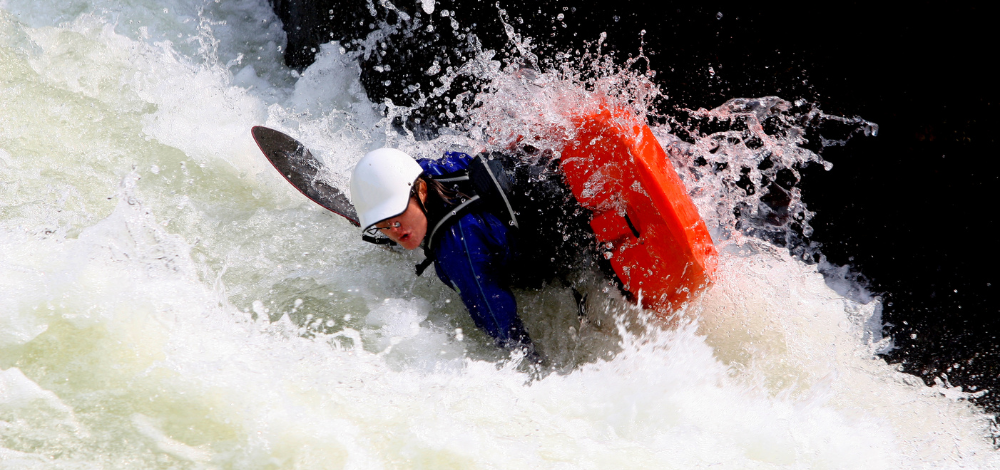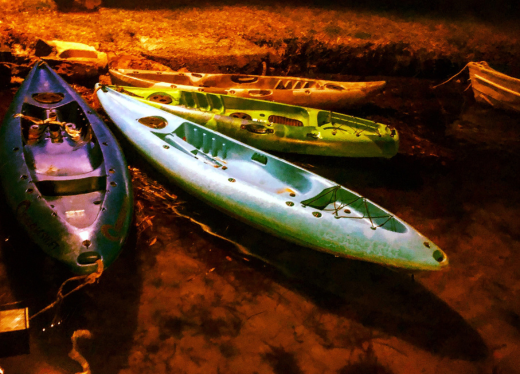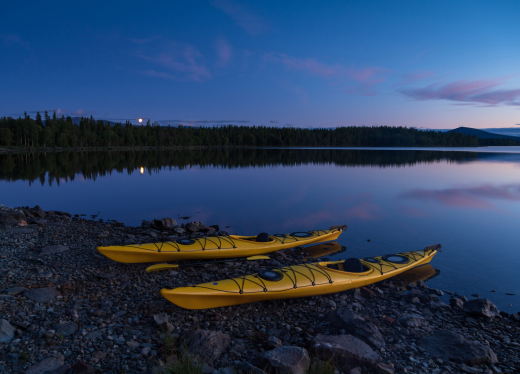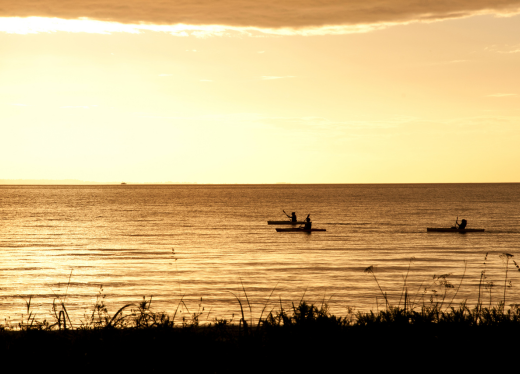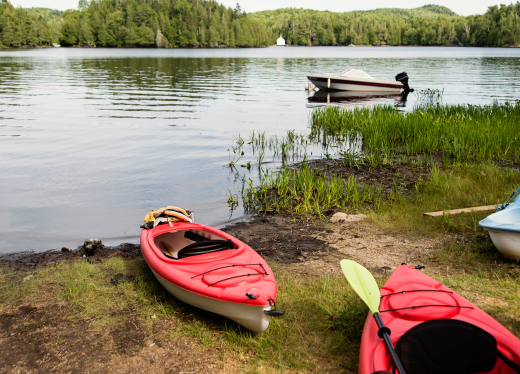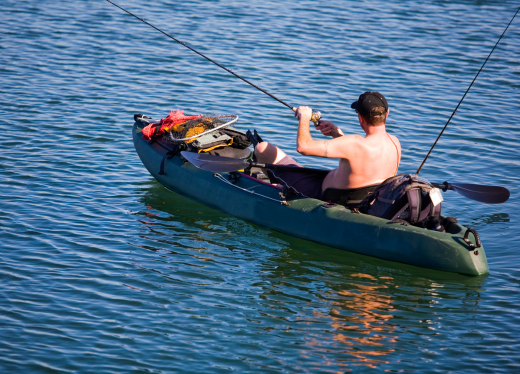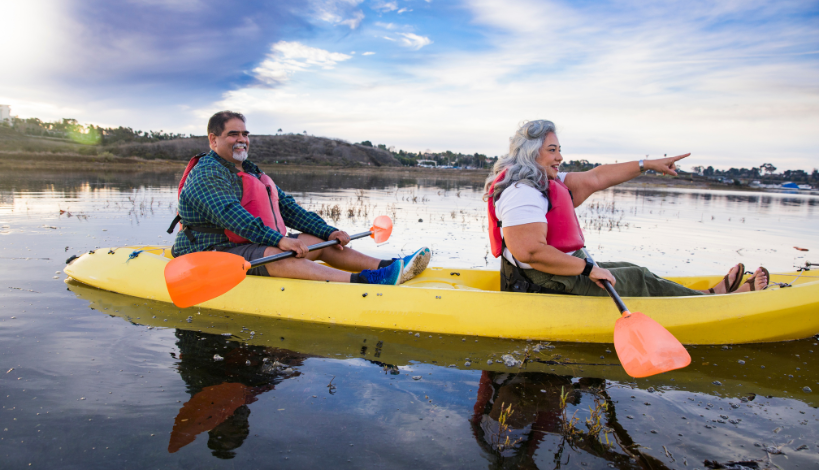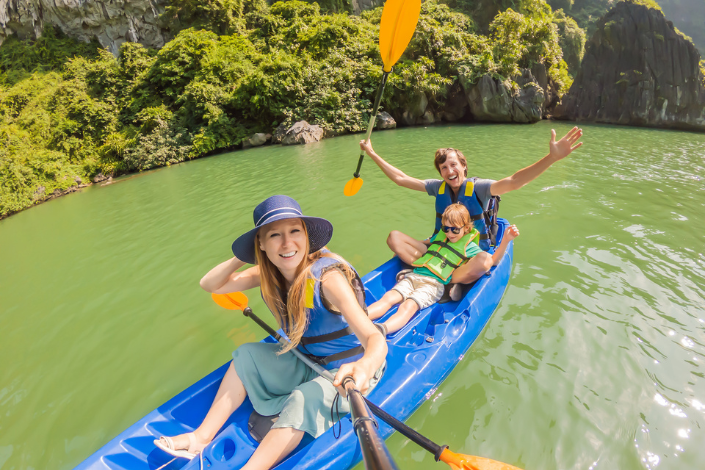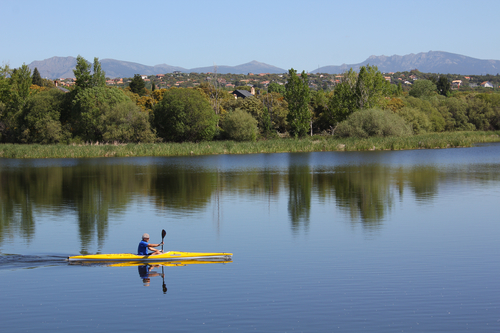Kayak camping is an adventure sport that combines the thrill of kayaking with the joys of camping. It is one of the awesomest ways to explore nature and create lasting memories while getting away from it all. When I say awesomest, I mean it! I’ve been kayak camping only twice and both times, it was epic.
So in this article, I’m going to share as much as I can about kayak camping: what it is, what to pack, what to expect, and so much more! Off we go…
What is Kayak Camping?
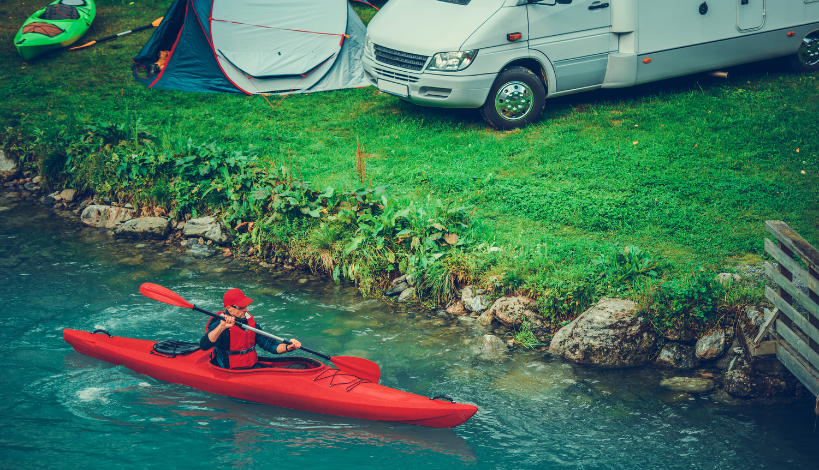
Kayak camping allows you to experience hard-to-find spots that may not be accessible by foot or car. Whether you want to spend a few days out in the wilderness or just have a quick overnight trip, kayak camping provides an exciting way to enjoy the outdoors.
With its unique combination of tranquility and excitement, combining camping and kayaking will provide you with an unforgettable experience that will stay with you for years to come. I am going to provide you with the information you need to know before you head out on your adventure.
What You Need To Get Started With Kayak Camping
In this section, I’m going to tell you about everything you need to have a safe kayak camping trip!
Essential kayak camping gear includes a reliable kayak that can handle various water and weather conditions, a life jacket, and waterproof clothing including pants, jacket, and gloves. You’ll also need an anchor system for your boat, storage containers or bags for your supplies, dry bags to keep items safe from water damage, and a bilge pump to remove any water that leaks into the kayak.
You should also bring along the appropriate camping equipment such as a tent with a fly sheet (to protect you from the rain), a sleeping bag and pad/mattress, a lightweight stove with fuel canister(s) (depending on how long you plan to stay out in the wilderness), a set of pots and pans for cooking meals and boiling water for drinking/cleaning dishes/etc., eating utensils, a lamp, and a first aid kit with band-aids/gauze, pain meds, an antiseptic, and antihistamines.

What might also be included is a folding knife or multi-tool for preparing food & emergency repairs of equipment or clothing, and a flashlight and headlamp with extra batteries (if necessary). For additional safety, it’s important to carry your mobile phone in a waterproof case along with a personal locator beacon in case of emergency situations.
Finally, don’t forget other important items such as sunscreen and insect repellant for protection against sunburns and bugs respectively, trash bags for disposing of waste materials responsibly, maps of the area so you know where you’re going, and water filter/purification tablets in case there are no available sources of clean drinking water.
You could bring a book, playing cards or fishing gear if desired, spare parts like rope and duct tape in case anything breaks while out on the water, plus enough food to last until your next destination or return home.
There’s a nice amount of preparation involved with these trips. When I go on a trip, I start packing two days ahead of time! If you pack things in a hurry, you may forget vital items, so it’s good to actually make a list first.
Just in case you need to print the list, here’s a bulleted list of items and gear I mentioned in this section:
- Kayak
- Life Jacket
- Waterproof Clothing (pants, jacket, gloves)
- Anchor System for the Kayak
- Storage Containers/Bags for Supplies
- Dry Bags to Keep Items Safe from Water Damage
- Bilge Pump to Remove Water Leaking Into the Kayak
- Tent with Fly Sheet
- Sleeping Bag/Pad/Mattress
- Lightweight Stove with Fuel Canister(s)
- Pots and Pans for Cooking Meals & Boiling Water
- Eating Utensils
- Lamp
- First Aid Kit
- Folding Knife or Multi-Tool
- Flashlight & Headlamp
- Extra Batteries if Necessary
- Waterproof Case for Mobile Phone
- Personal Locator Beacon
- Sunscreen and Insect Repellant
- Trash Bags
- Maps of the Area
- Water Filter/Purification Tablets
- Book/Playing Cards/Fishing Gear
- Spare Parts (Rope & Duct Tape)
- Enough Food to Last Until Your Next Destination or Return Home
Now that you have a full list of items and gear for kayak camping, it’s time to talk about the actual trip!
What to Expect During Your Kayak Camping Trip
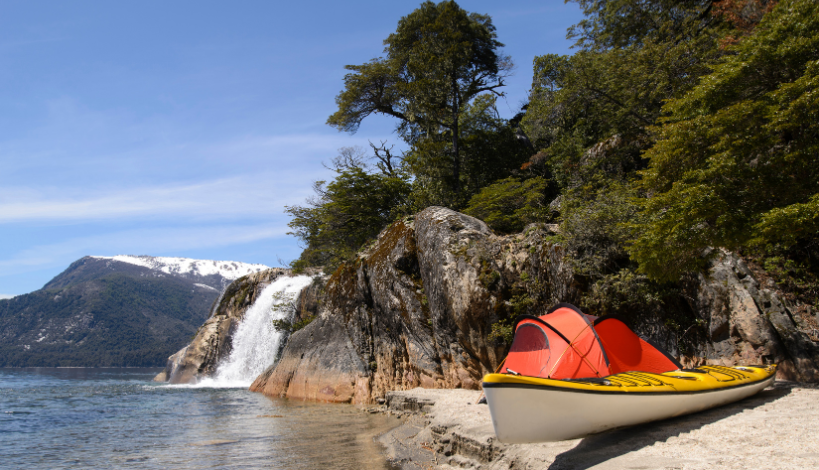
A kayak camping trip is an adventure that will stay with you for years to come. It’s filled with thrilling moments, breathtaking views, and unforgettable memories. For those who deal with anxiety, you will need to manage it but hopefully, this section can give you a heads up on what to expect.
When out on the water, expect to encounter various conditions like choppy waters, strong winds, and maybe even a few rough waves. Make sure to know your limits and stay within them – keep track of the weather conditions in the area before heading out on your kayak.
Also expect nights filled with sounds you’ve never heard and stars that seem close enough to reach out and touch. I often take breaks during my trips just to gaze up at the night sky – it’s truly breathtaking. But also, if you’re not used to the sounds of nature, you might find it hard to sleep.
The most important thing to remember is to respect nature; leave no trace of your trip by taking away all trash and other waste materials.
Choosing The Right Kayak For Your Camping Trip
When it comes to choosing the right kayak for camping, there are a few factors to consider in order to have the best experience.
It is important to take into account the type of water you’ll be paddling on, your level of expertise with kayaking and camping, and the size and weight capacity of the kayak.
#1. Touring Kayak for a Calm River or Lake

There are, as you may know, three main bodies of water and they are rivers, lakes, and the open ocean.
If you plan on camping on a calm river or lake, you will want to choose a thin kayak with storage compartments (or a tandem so you can put equipment in the spot where someone else usually is, if you’re going alone) as they offer excellent stability and maneuverability when navigating through tight spaces or shallow waters.
#2. Sit-in Fishing Kayak for Open Ocean Waters
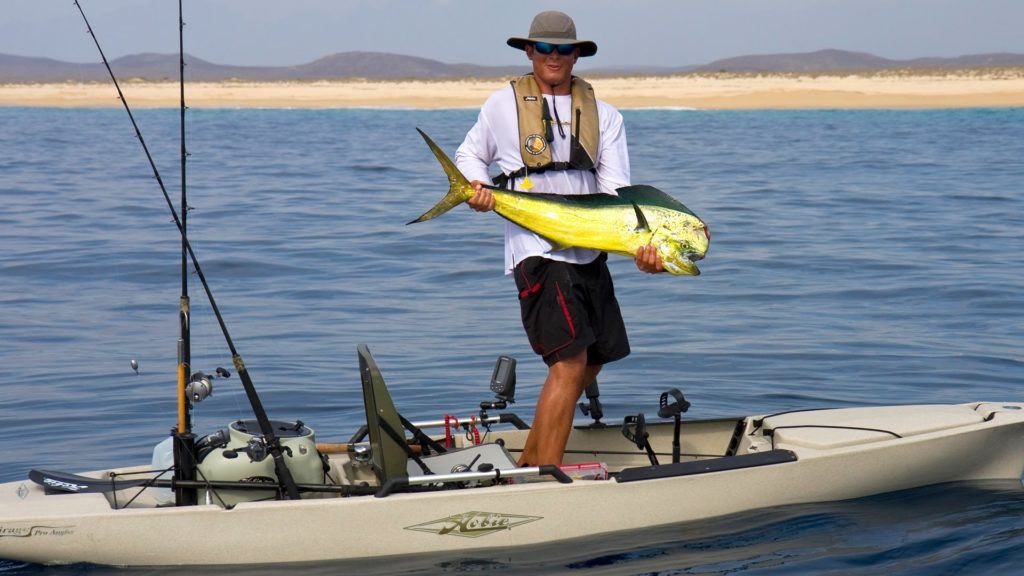
For those venturing out in open ocean waters, a sit-in fishing kayak (or a sea kayak) would provide ample room for camping gear and better protection from windy conditions.
You could go fishing on the way to your destination, put the fish on ice until you get there and can build a fire to cook it.
#3. Wide Kayaks for Beginner Campers
It is also essential that you consider your level of expertise with both kayaking and camping before selecting a kayak. Beginner campers should look for wider models that offers stability while more experienced campers may prefer longer models with more speed capabilities.
Additionally, some models are designed for solo trips while others are better suited for groups due to their increased weight capacities. There is also a 3-person kayak so you can take someone else and put your equipment in the other space.
Just be sure not to overpack the boat so it’s stable enough to get where you’re going.
Tips For Packing Lightly And Efficiently for Your Kayak Camping Trip
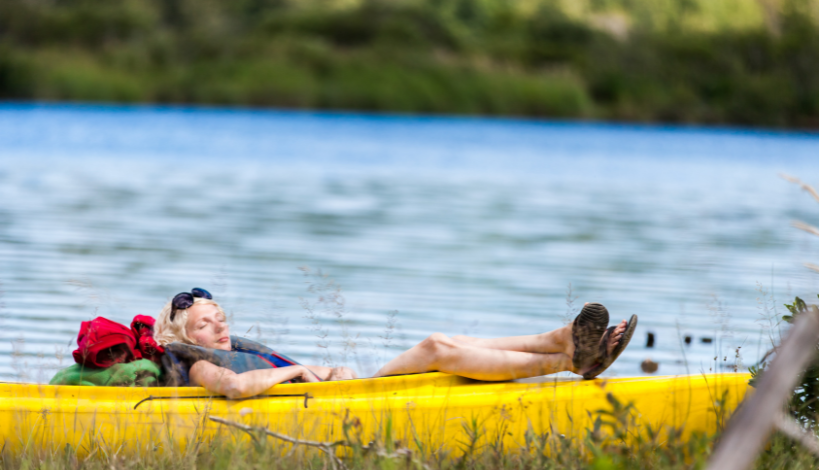
Packing efficiently for a kayak camping trip requires careful planning and forethought. When packing, it’s important to consider the size of your kayak and the duration of your trip so that you can plan accordingly.
For each item on your list, try to choose lightweight versions wherever possible. This can make or break your trip! If your supplies make the kayak too heavy, it will hold you back on your kayaking and camping trip.
Freeze Dried and Dehydrated Foods Can Help
If possible, consider bringing freeze-dried or dehydrated food which is both lightweight and easy to prepare. Pack multipurpose items such as folding camping chairs that can also be used as tables or storage containers.
Versatile Clothing is Important
When it comes to clothing, pack items that are versatile and capable of layering depending on the weather conditions you may encounter throughout your trip.
Bring mostly quick-drying fabrics that can keep you warm when wet, but still allow for air circulation in hot climates. Also remember to bring extra socks and comfortable shoes in case you need them for unexpected adventures.
Final Tips for Packing
Finally, make sure you have enough room in your kayak for all of the items listed above before adding any extras. Packing lightly is key when it comes to kayak camping; avoid bringing anything bulky or unnecessary so you don’t weigh down your craft or use up valuable space inside the cockpit area.
With careful planning and strategic packing strategies, you’ll be ready for an unforgettable camping experience out on the open waters.
Where To Find Good Destinations For Kayaking Adventures
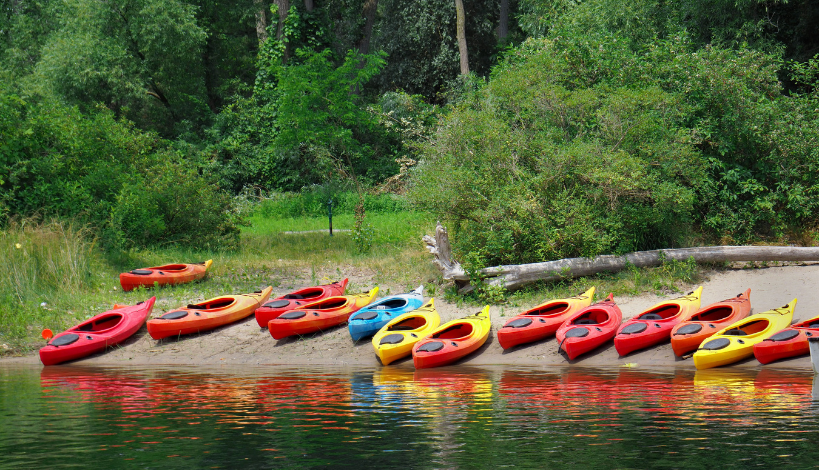
For those looking for the perfect kayaking adventure destination, there are plenty of amazing locations throughout the world. When you find one, it would be a good idea to research the area first and to go with a couple of buddies until the area becomes more familiar or predictable for you.
You’d want to know what animals you may encounter, how the weather is there normally, how cold it gets at night, the insects that might bother you (I suggest taking a mosquito net, just in case), etc.
Location Recommendations for Camping in Your Kayak!
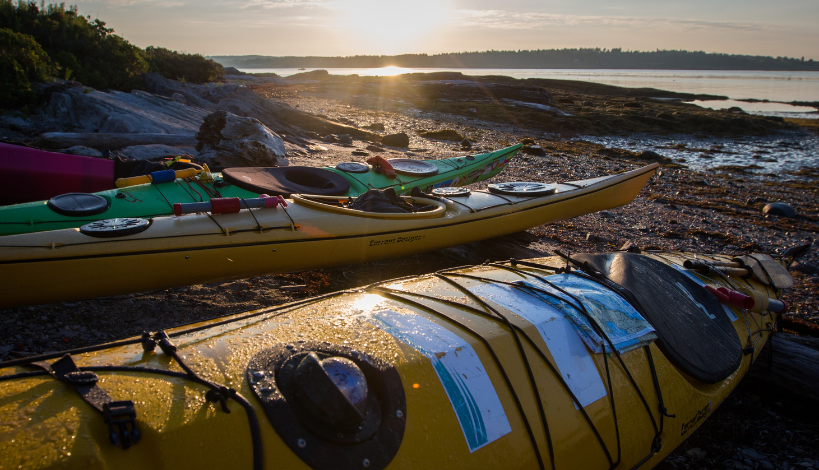
In North America, the west coast of Canada offers some of the best spots for kayaking. The coastlines of British Columbia, Washington, and Oregon all have stunning scenery and plenty of wildlife to spot along your journey.
Notable kayaking locations on the west coast include Desolation Sound in British Columbia, San Juan Islands in Washington, and Nehalem Bay in Oregon.
For those looking to go further south, California has some excellent kayaking spots along its coastline. You’ll find crystal clear waters among picturesque cliffs at La Jolla Cove near San Diego or Morro Bay near San Luis Obispo.
Further north, you can adventure along the Mendocino coastline where you may just spot sea lions or gray whales swimming near your boat!
If you live on the east coast, there’s Caledon State Park on the Potomac River in Virginia with trails, bird watching, and campsites only accessible by hiking or paddling. In Maryland, there’s Assateague Island, where you can view the wild horses while on your kayak and go on a guided tour if desired, but you’d need a camping permit.
In Florida, there’s the Everglades National Park where you can camp in the wilderness but you need a permit and the cost of camping per night. Further north, there’s the Allagash River in Maine where you can hire guides if you want that will help you with your equipment and trip and you can rent cabins there as well as an extra option.
If heading overseas is more your style, then Norway should be high on your list of destinations for an epic kayak outing. With its fjords and incredible landscapes, it’s easy to see why Norway is one of Europe’s top kayak destinations.
Popular places for sea kayaking include two fjords in Alesund (Geirangerfjord and Hjørundfjord) where you can explore tiny fishing villages tucked away by mountainsides and spot seals basking upon rocky shores!
If you’re looking for a tropical experience while still enjoying some outdoor adventure activities such as kayaking, then Thailand should be considered for an unforgettable excursion. There are many secluded islands there that offer white sand beaches with crystal clear turquoise waters, just waiting to be explored! The island of Koh Yao Noi is well known for its tranquility, as well as its abundance of exotic marine life that can often be seen swimming close by during a day out on the water.
From North America’s rugged west coastline all the way across to Thailand’s tropical seaside paradise, there are countless opportunities available no matter what location suits your needs best.
In case you want to add all the locations I’ve mentioned above to your bucket list, here are all those locations listed in bullet form below:
- Desolation Sound, British Columbia
- San Juan Islands, Washington
- Nehalem Bay, Oregon
- La Jolla Cove, California
- Morro Bay, California
- Mendocino Coastline, California
- Caledon State Park, Virginia
- Assateague Island, Maryland
- Everglades National Park, Florida
- Allagash River, Maine
- Geirangerfjord and Hjørundfjord, Norway
- Koh Yao Noi, Thailand
The Benefits Of Kayak Camping
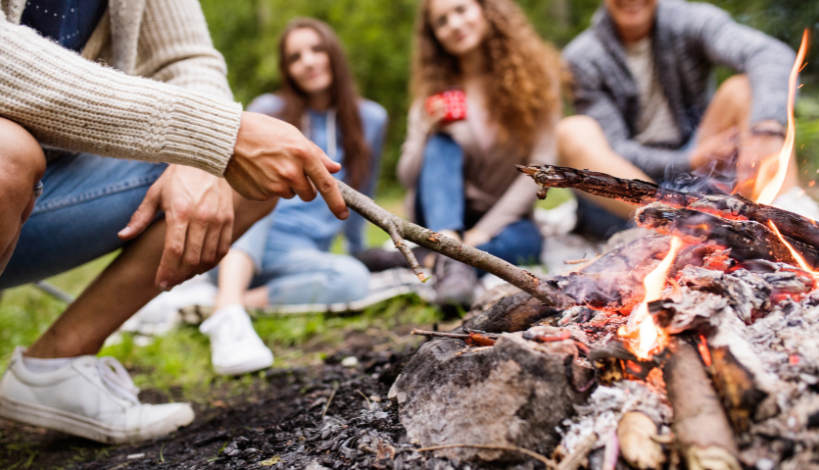
Kayaking is a fantastic way to stay active while camping. You’ll work out your arms, back, core, and legs as you paddle along rivers, lakes, or the open ocean. Plus, you’ll get an incredible view of the surrounding landscape as you move along, something no ordinary campsite could offer.
Another huge benefit of kayak camping is that since you can only take so much equipment at once, it’s extremely lightweight and easy to transport when compared to traditional camping gear. With a few lightweight items like a tent, sleeping bag, water filter, cookware set, etc., you can easily carry all your essentials for days of adventuring without breaking your back (or bank).
For those like me who passionately love wildlife viewing opportunities, kayak camping provides some truly amazing experiences. Kayaks are stealthy vessels that allow you to sneak up close to wildlife without disturbing them giving you access to picturesque views and special moments with animals in their natural habitat.
Overall, kayak camping is an incredibly rewarding experience for anyone looking for an adventurous getaway in nature. For me, personally, it has snapped me out of depression and anxiety and provided much needed relief a couple of times in my life. Highly consider it if you enjoy kayaking and/or camping!
Safety Considerations When Planning Your Trip
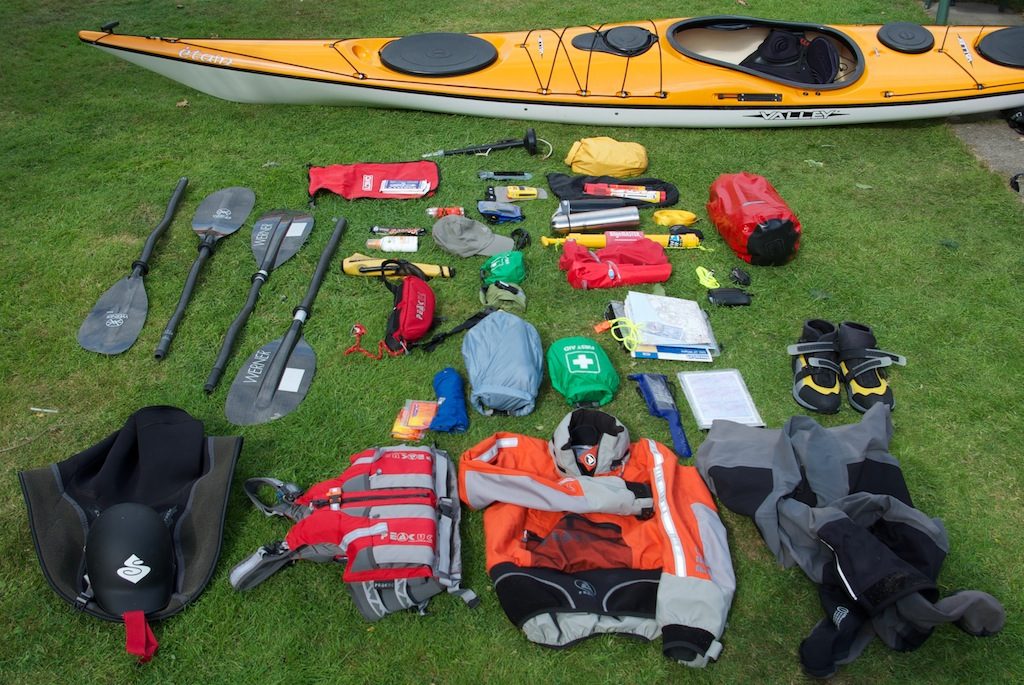
When kayak camping, safety is paramount.
Before embarking on a kayaking trip, it is important to be familiar with the basics of water safety. Kayakers should make sure they know how to use all of their safety equipment properly and always wear a life jacket or personal flotation device (PFD).
It’s also important for kayakers to know the local weather forecast and plan trips accordingly, avoiding high wind speeds and choppy waters.
Before leaving shore, make sure you have enough food and clean drinking water for your trip, as well as an emergency communication system in case something goes wrong. Tell someone your itinerary before departing so that if necessary, they can contact emergency services if you don’t return by a certain time.
Keep an eye on the other boats and people in the area to avoid collisions or dangerous situations. While night kayaking is generally discouraged due to reduced visibility, if it is unavoidable, then take extra caution when navigating unknown waters and carry a bright flashlight or headlamp that can help provide better visibility in dark conditions.
Finally, be aware of any hidden hazards like rocks or underwater objects that could damage your boat or cause injury; paying close attention to charts or navigation apps can help you steer clear of these types of areas. Take some protection against animals and insects, and even other humans (I had to say it), because you never know what you might run into in the woods.
I want to emphasize this as much as possible: if it’s your first time kayak camping, please go with at least one other experienced buddy.
Is It Possible to Sleep in a Kayak?
Yes, it is possible to sleep in a kayak! It can be uncomfortable and tiring, but with the right preparation and safety measures taken, you’ll be able to comfortably spend a night out on the water.
First off, make sure that your kayak is well-suited for overnight camping. Most recreational or touring kayaks are designed to fit two people, so if you’re camping solo, make sure that your kayak is large enough for you to stretch out and even sleep diagonally. It’s also important to properly secure your gear in the kayak before going to sleep; otherwise, it could easily be swept away by waves or wind during the night!
When it comes to sleeping in your kayak, you’ll need a few must-have items like an insulated and waterproof sleeping pad, a suitable sleeping bag, and a camping pillow. If it’s particularly cold outside, you may want to bring along a few extra layers of clothing or an emergency blanket for added warmth.
In order to make sure your kayak is secure while you sleep, it’s important to find a safe spot to camp. If you can, look for a shallow, calm area of the water where your kayak won’t drift away in the night. Make
How Many Dry Bags for Kayak Camping?

The number of dry bags you’ll need for kayak camping depends on how many items you plan to bring. Generally, two or three dry bags should be more than enough to fit all your belongings, including food and snacks.
If you’re planning a long-distance trip with multiple days of camping, you may want to add an extra dry bag or two for items like clothing and sleeping gear.
It’s also important to make sure your bags are waterproof, so check the seams of each bag before packing it. For added protection against water, consider storing your items in plastic bags or garbage bags before putting them into the dry bags.
Where Do You Put Your Bag in a Kayak?
Most recreational or touring kayaks have designated storage areas in the front and rear hatches. You can fit one large dry bag in each hatch, depending on the size of your boat.
If you’re short on space, you can also securely tie smaller items onto your kayak with bungee cords or straps. For additional storage, you can tie a floating dry bag on the back of your boat.
When packing, it’s important to keep in mind that anything stowed away should be kept as far away from the cockpit and feet as possible. This will help with balance and comfort while paddling. Also, make sure all items are securely tied down so they won’t shift or move around with the waves.
In Summary
Not only does it provide a great way to get out in nature and explore, but it also gives you the opportunity to challenge yourself physically while reaping the benefits of being close with friends or family.
With some basic knowledge and gear, anyone can enjoy kayaking and camping on their own terms. Whether you’re looking for a weekend trip away from civilization or just want to experience something new, kayak camping may be right for you!
Trust me, you’ll thank yourself like I have in the past and kayak camping is as cheap and as nature loving as it gets!




